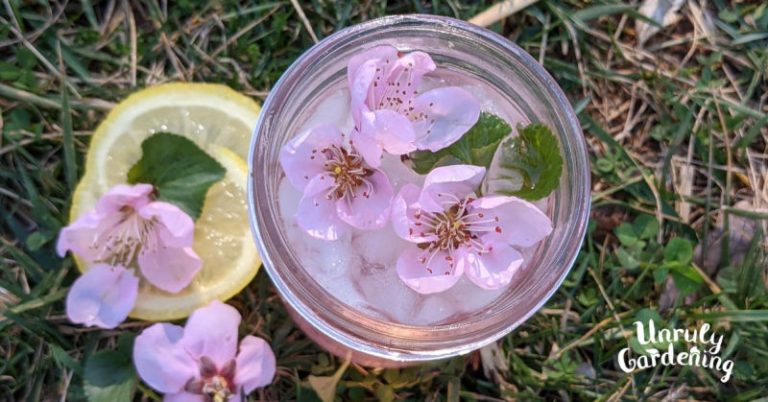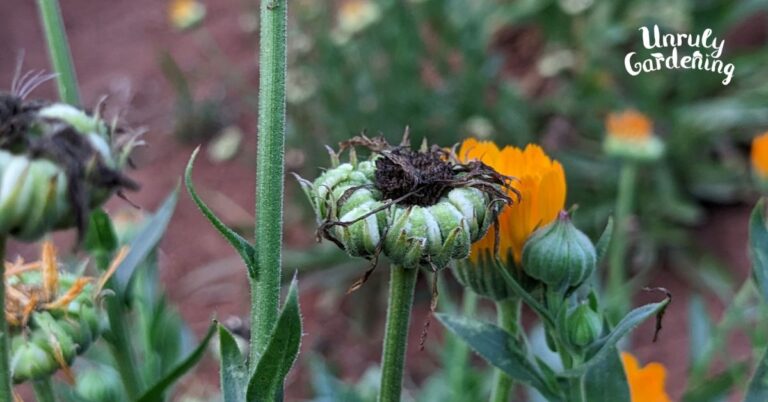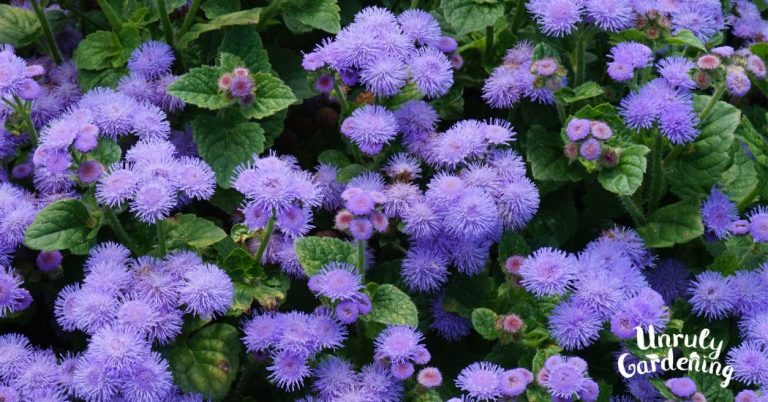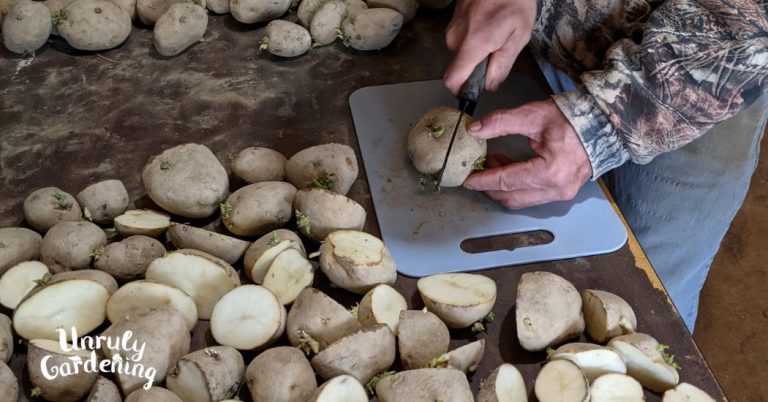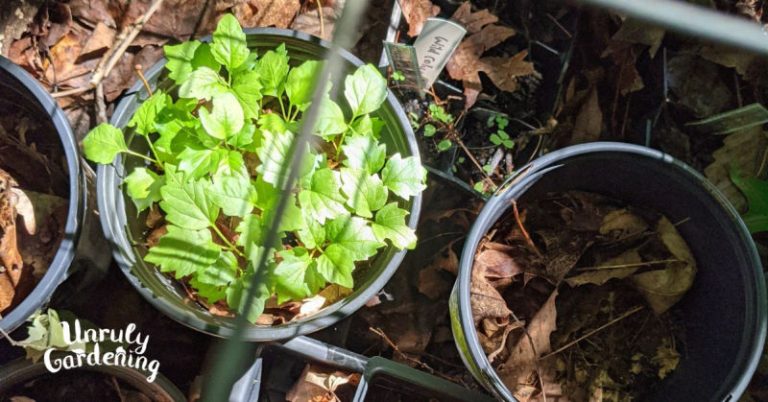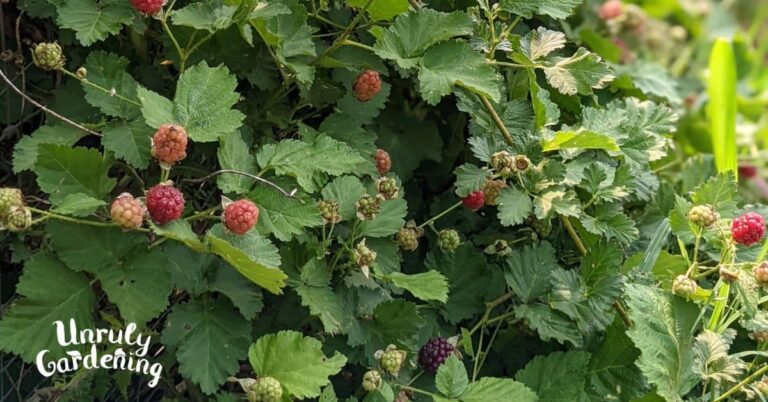How to Grow Snapdragons from Seed
Snapdragons are a much-loved garden classic to grow!
Both dwarf and tall versions of these colorful flowers make a beautiful, long-lasting floral show throughout the growing season, and are a favorite for cut flower displays.

Boasting a wide range of colors to choose from, snapdragons come in both single-color and bicolored flower varieties. The blooms are attractive to pollinators and the plant itself has some cold resistance.
(The flowers are also edible, but to be honest – they’re not that tasty! Snapdragons taste a bit like overgrown lettuce that is turning bitter.)
This hardy, gorgeous flower is one well worth making space for in your garden.
Snapdragons At a Glance
Short-lived/Tender Perennial Flower: Snapdragon (Antirrhinum majus)
- Seed Size: Tiny
- Sowing method: Surface-sown- seeds are light-dependent germinators.
- When to start: 8-10 weeks before your estimated last frost date.
- Cold-hardiness: Cold-hardy. Young plants may require protection from frosts, but established plants withstand cold weather handily.
- Transplant time: 1-2 weeks before your estimated final frost date.
- Sun required: Full sun- at least 6 hours of direct sunlight per day.
- Possible to grow in pots?: Yes. Choose compact, medium-height, or trailing varieties for pots for best results, and plant in at least a 8″ deep pot.
- Spacing: 6-12 inches, depending on variety.
- Estimated days to germination: 4-21 days.
- Pruning/pinching required for branching?: Optional. Pinching or pruning your snapdragons will encourage more branching, and thus, more blooms, but the plants will also do some branching naturally themselves.
- Support required?: Very tall varieties with insufficient lighting can sometimes grow weak stems at risk of snapping in strong winds- some support may be of assistance in this case.
- Bloom time: Spring through fall. Climates that are particularly warm in winter may have winter blooms.
- Toxic or edible?: Edible. Not very tasty, but edible.
- Attractive to pollinators?: Yes! Bumblebees, butterflies, and hummingbirds may all visit your snapdragon plants, among other native pollinators.
- Colors: Flowers can be white, yellow, pink, red, magenta, orange… the list goes on! Wide range of flower colors available, both single-color and bi-colored.

Sowing & Seedling Care
Before getting into your seed packets, you’ll want to get your seed-starting containers ready.
You can grow seeds in any number of containers, such as milk cartons, paper cups, or the standard black trays with segmented inserts you can find in most any garden center. The important thing to make sure of is that they have holes in the bottom, so that water can drain properly. Improper drainage can cause snapdragon seedlings to rot.
Many gardeners prefer to use seed starting medium, but we use Fox Farm Ocean Forest Mix for almost all of our seed starting and potting up.
Snapdragon seeds are very tiny! Because of this, it’s a good idea to fill your seedling containers with pre-dampened soil. You can mix your soil together with some water in a bucket, then put it in the containers, or you can put the dry soil in the containers and water it until it’s properly moistened.
This way, you don’t have to worry about displacing your seeds by watering them after they’ve been sown- they’ll be dampened enough just by contact with the soil.

Sowing Snapdragons
Once you’ve set your containers up, you can open your snapdragon seed packets and get to planting!
Snapdragons are light-dependent seeds, and they’re very tiny. Be careful opening your packet, and make sure to do it somewhere out of the way of strong winds or indoor fans.
To sow, simply sprinkle the seeds over top the soil. Using your fingertips, gently, but firmly, tamp down the seeds to give them full contact with the soil. Don’t cover them! Snapdragon seeds should be exposed to the light for proper germination.
If sowing multiple varieties, make sure to wipe your fingers off between tamping. Sometimes the little seeds can stick to your fingers along with the soil, and might accidently end up being transferred to a different container without you noticing!
Then, simply cover the seedlings with something clear to help maintain moisture levels- a loosely draped piece of plastic wrap is common, or you can use a greenhouse top or a pane of glass- and place in the light.
Preferably, use a grow light, with the light set about 4 inches above the seeds. If you don’t have or don’t want to use a grow light, place them instead in front of your sunniest window.
Germination will occur in 4-21 days after sowing- it varies, depending on seed freshness, variety, warmth, and light exposure.

Seedling Care
Once seeds have germinated, remove the top covering. Water seedlings gently as needed. To tell if the seedlings need water, test the soil with your finger- if it’s dry, it needs water. Make sure not to have things sopping wet, but you want to keep the soil nicely and evenly moist when possible.
If you want to pinch the stem of your snapdragons back, begin doing so once the seedlings have grown 3-4 inches tall, and have more than one set of true leaves. Make sure when you pinch you’re leaving some leaf nodes on the main plant- that’s where the branching will come from!

Dividing
Since it’s easiest to simply sprinkle the seeds over the soil instead of individually placing them, seedlings often grow up crowded and need dividing. It’s a good idea to split the seedlings up into their own containers once they get a few inches tall.
Gently tease apart the plants, being careful as you untangle the roots. Try to avoid damaging them as much as possible- both roots and baby plants are fragile!
Place the separated snapdragon seedlings in their own containers of soil, using your fingers to firm the soil around the base. Give them a good watering, and don’t be surprised if they wilt a bit. Transplanting is a hard thing to go through when you’re a young plant!
Don’t put the seedlings back under the light right away. Give them 12 hours, or overnight, with the grow light off so they can recover. Then turn the light back on them, and continue caring for them as normal until it’s time to transplant them to the garden.

Transplanting Snapdragons Outdoors
You can plant out your snapdragons 1-2 weeks before your estimated final frost date.
Harden the seedlings off in a sheltered location before proceeding to the garden. (Hardening off seedlings means to put them in a sheltered spot outdoors for increasing amounts of time each day, until they are sturdy and strong enough to face the highs and lows of outside conditions.)
In the Garden
Plant your snapdragons in full sun. This means the place gets at least 6 hours of direct sunlight or more. Partial shade won’t kill them, but they won’t have as full of a display of blooms as a snapdragon planted in full sun.
Amend as needed to create a rich, well-draining soil. A generous scoop of compost well mixed-in will often do the trick. You may need to correct your soil’s pH- test your soil if you have problems getting snapdragons to grow and thrive. They like a neutral soil pH, anywhere between 6.2 to 7.0.

Space your snapdragons 6-12 inches apart. More dwarf type plants can be planted closer together, while larger varieties need more distance. If plants in your area are very prone to mildew, you can space the plants 18 inches apart for better airflow to try and reduce the risk of encountering it.
Firm the soil around the base of the plant with your hands, and make sure to give it a generous watering. The plant will likely wilt a bit from transplant shock, but should recover overnight.
If flowers continue to struggle for longer than a day or two, a diluted dose of fish emulsion (or other liquid fertilizer) may help perk them back up.
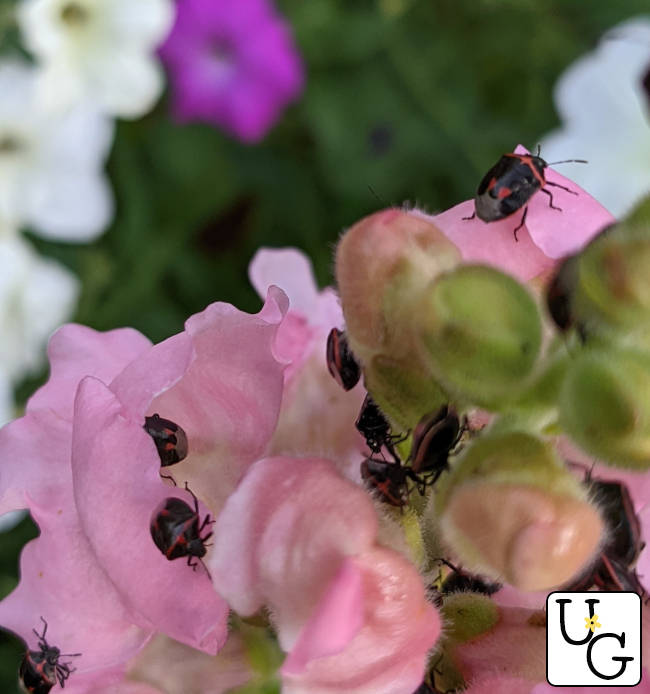
Garden Care
Snapdragons are rather hardy flowers. Keep them watered while they’re getting established as seedlings, but once they’ve settled in place, they’re pretty tough! You may or may not need to water through drought or dry times, when there hasn’t been much rainfall- if you find your plants have the need for it, give them about 1 inch of water a week.
Deadheading the flowers will increase bloom time. Snapdragons sometimes stop blooming mid-summer, when the heat is at its peak, but usually start up again when cool fall weather comes around.
There are some pests that might find their way to your snapdragons. Keep an eye out for signs of aphids, wee harlequin bugs, as well as spider mites and mealybugs. They’re sometimes hard to catch, but if you notice a plant looking odd, take the time to check it out thoroughly.
If it’s not bugs, but your plants still look odd, look up powdery mildew, rust, and leaf spots for snapdragons, and compare your plant with the images you find. Drip-tape or watering at the base instead of overhead watering can help reduce the risk of disease.
Again, snapdragons are hardy flowers, so you’ll likely not have much trouble with them- it’s just a good idea to keep an eye out for any potentially issues, so you can hopefully catch them before they turn into actual problems!
Snapdragons in Pots
Snapdragons can be planted in pots, with compact and medium-height varieties doing the best. Provide at least an 8 inch deep pot full of rich potting soil per plant, and make sure the pot has good drainage.
It is likely you’ll need to provide nutrients to the plants over the course of the year. If you notice weak blooming, yellowing leaves, or other signs of nutrient deficiency, dose the plant with fertilizer to correct the problem.
We use Fox Farm’s Grow Big Liquid Plant Food or diluted fish emulsion to fertilize snapdragons.
Pots dry out much quicker than in-ground plantings. Avoid letting the pots go bone-dry. When you stick your finger in the soil and can feel that it’s dry down to about an inch deep, it’s time to water.

Lifespan
As tender and short-lived perennials (that are often assumed to be annuals), snapdragons can sometimes overwinter and bloom in spring. Around here (USDA Zone 7a), snapdragons tend to die after blooming in the second year, but some varieties might be capable of hanging on another year or two in certain climates.
Some people say that snapdragons don’t have as many or as nice of blooms in successive years, and pull the plants after they’ve finished flowering the first year. On the other hand, we’ve sometimes had snapdragons only put out a few flowers first year, and then put out an absolute explosion of beautiful, vivid blooms all throughout the second.
Whether or not to try and overwinter your plants is up to you! Either way, these cold-hardy, colorful flowers will put on their display throughout the year, right up until winter- and sometimes beyond!

